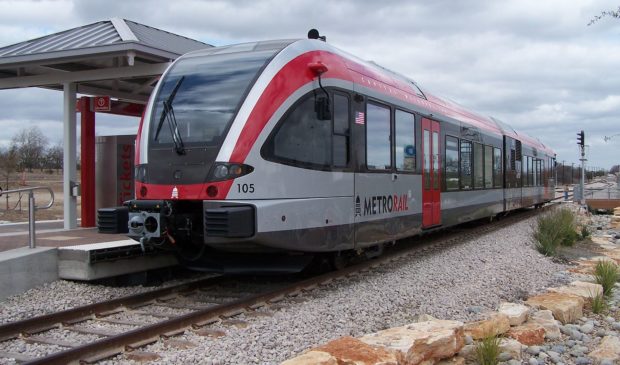Capital Metro greenlights millions more for MetroRail
Tuesday, August 29, 2017 by
Caleb Pritchard The Capital Metropolitan Transportation Authority will spend $65.7 million to install federally mandated safety upgrades along its commuter rail line.
The agency’s board of directors voted unanimously on Monday to hire Modern Railway Systems to augment the 32-mile Red Line with a positive train control system.
Capital Metro President and CEO Linda Watson told the board that $12.8 million of the cost of the contract will be covered by a federal grant.
The Rail Safety Improvement Act of 2008 originally required that all commuter rail lines be equipped with PTC by 2015, a deadline that was later extended to December 31, 2018. Congress passed the law in response to deadly train collisions in 1998 and 2002.
“PTC is the largest, most complex technical effort ever undertaken by the American rail industry,” according to a video produced by the Association of American Railroads. It goes on to explain that PTC “is advanced technology designed to automatically stop a train before certain incidents caused by human error can occur: Collisions, derailments, and work zone mishaps.”
There currently exist three major types of PTC systems across the country. Capital Metro staff opted for the one known as Enhanced Automatic Train Control, which is also used in Denton County, Salt Lake City and Portland, Oregon.
Because it is approved by the Federal Railroad Administration, Enhanced Automatic Train Control comes with fewer regulatory requirements.
Modern Railway Systems will begin installing the PTC system and its requisite fiber optic cable network next year. However, Capital Metro has plans to request another extension from the federal government to allow the work to continue through 2020.
The price tag of the system caused notable heartburn among the board members. However, Chair Wade Cooper, who characterized PTC as a “federally unfunded mandate,” suggested that getting more people to ride the Red Line could be a palliative.
“I think it’s incumbent on us to really see if there are ways where we can improve the scale of that and defray the costs to get some more trips because it has a pretty significant impact on our operating costs,” said Cooper.
Photo by Greg3564 (Own work) [CC BY-SA 3.0 or GFDL], via Wikimedia Commons.
The Austin Monitor’s work is made possible by donations from the community. Though our reporting covers donors from time to time, we are careful to keep business and editorial efforts separate while maintaining transparency. A complete list of donors is available here, and our code of ethics is explained here.
You're a community leader
And we’re honored you look to us for serious, in-depth news. You know a strong community needs local and dedicated watchdog reporting. We’re here for you and that won’t change. Now will you take the powerful next step and support our nonprofit news organization?



